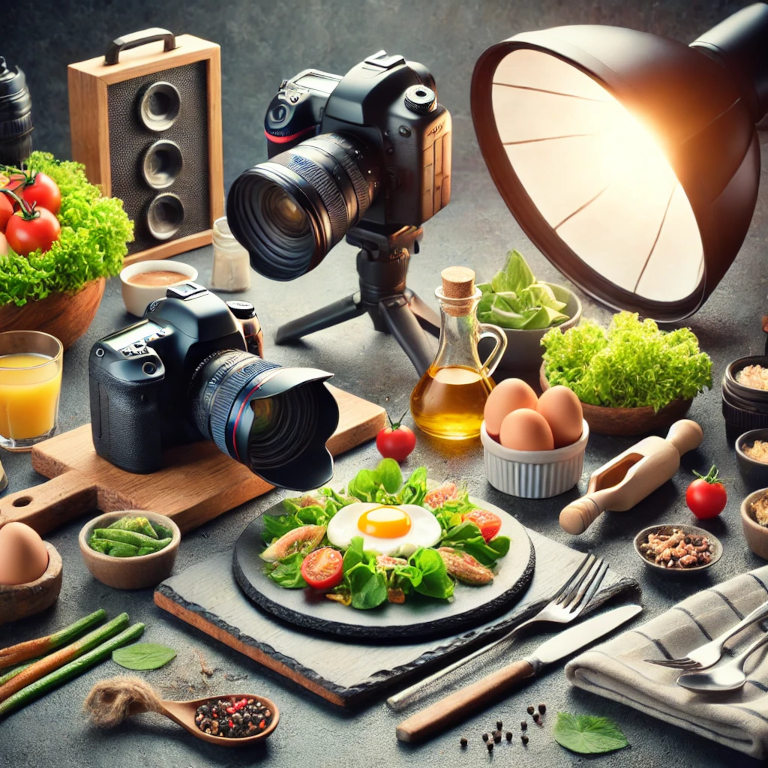Food photography is a captivating and essential aspect of the culinary world, blending the art of visual storytelling with the science of cooking. It involves capturing the beauty, texture, and essence of food in a way that entices the viewer and evokes a sensory experience. As an expert in Food and Cooking, I will guide you through the fundamentals of food photography, offering tips and techniques to help you create stunning images that showcase your culinary creations.
The Importance of Food Photography
In today’s digital age, food photography has become a powerful tool for chefs, food bloggers, and culinary enthusiasts. High-quality food images can elevate a recipe, attract readers to a blog, and enhance the overall dining experience. Whether you are sharing recipes online, promoting a restaurant, or simply documenting your culinary journey, mastering food photography can significantly impact your success.
Essential Equipment for Food Photography
- Camera: While smartphones have advanced camera capabilities, a DSLR or mirrorless camera offers greater control and flexibility. Look for a camera with manual settings, interchangeable lenses, and high-resolution capabilities.
- Lenses: A macro lens is ideal for capturing detailed close-ups, while a prime lens with a wide aperture (e.g., 50mm f/1.8) is great for achieving a shallow depth of field and beautiful bokeh.
- Tripod: A sturdy tripod ensures stability and allows for longer exposure times without blurring. It is essential for maintaining consistency, especially in low-light conditions.
- Lighting: Natural light is the best for food photography, providing a soft and flattering effect. However, artificial lighting such as softboxes or LED panels can be useful in controlled environments.
- Reflectors and Diffusers: These tools help manipulate light, reducing harsh shadows and creating even illumination. Reflectors bounce light back onto the subject, while diffusers soften direct light.
Key Techniques for Stunning Food Photography
- Lighting: Good lighting is crucial for capturing the true colors and textures of food. Position your subject near a window for natural light, and use reflectors to fill in shadows. Avoid using direct overhead lighting, which can create unflattering shadows.
- Composition: Composition involves arranging elements within the frame to create a balanced and visually appealing image. Use the rule of thirds to place the main subject off-center, and incorporate leading lines to draw the viewer’s eye into the scene.
- Angle and Perspective: Experiment with different angles to find the most flattering perspective for your dish. Overhead shots work well for flat lays and symmetrical arrangements, while a 45-degree angle highlights depth and texture.
- Background and Props: Choose backgrounds and props that complement the food without overpowering it. Neutral and textured backgrounds like wood, marble, or linen work well. Props such as cutlery, napkins, and fresh ingredients can add context and interest.
- Focus and Depth of Field: Use a wide aperture (low f-stop number) to create a shallow depth of field, blurring the background and making the subject stand out. Focus on the most visually interesting part of the dish, such as a garnish or a juicy slice.
- Styling: Food styling is the art of arranging food to make it look as appealing as possible. Pay attention to details like portion size, garnishes, and the placement of each element. Fresh ingredients, vibrant colors, and textures enhance the visual appeal.
- Editing: Post-processing is essential for refining your images. Use editing software like Adobe Lightroom or Photoshop to adjust exposure, contrast, color balance, and sharpness. Be mindful not to over-edit, as this can make the food look unnatural.
Common Mistakes to Avoid in Food Photography
- Harsh Lighting: Avoid using harsh, direct lighting that creates unappealing shadows and highlights. Opt for soft, diffused light to achieve a more natural look.
- Cluttered Composition: Keep the composition clean and uncluttered. Too many elements can distract from the main subject and make the image feel chaotic.
- Poor Focus: Ensure that the main subject is in sharp focus. Blurry or out-of-focus images can detract from the overall quality and professionalism of the photo.
- Ignoring Color Harmony: Pay attention to the color palette of your dish and props. Harmonious colors create a cohesive and visually pleasing image, while clashing colors can be jarring.
- Over-Editing: Excessive editing can make food look artificial and unappetizing. Aim for subtle enhancements that maintain the natural beauty of the food.
Tips for Enhancing Your Food Photography Skills
- Practice Regularly: Like any art form, food photography improves with practice. Experiment with different techniques, styles, and dishes to refine your skills.
- Study Other Photographers: Analyze the work of professional food photographers to understand their techniques and compositions. Draw inspiration from their style and apply what you learn to your own work.
- Join a Community: Engage with other food photographers through online communities, workshops, and social media groups. Sharing tips, feedback, and experiences can accelerate your learning process.
- Keep Learning: Stay updated with the latest trends and advancements in food photography. Online courses, tutorials, and photography books are valuable resources for continuous improvement.
Summary
Food photography is an art that combines technical skills with creative vision. By mastering the essentials of lighting, composition, and styling, you can create stunning images that showcase the beauty of your culinary creations. Avoid common mistakes, practice regularly, and continuously seek inspiration to elevate your food photography to the next level. Whether you are a chef, blogger, or culinary enthusiast, high-quality food photography can significantly enhance your culinary storytelling and connect with your audience.






